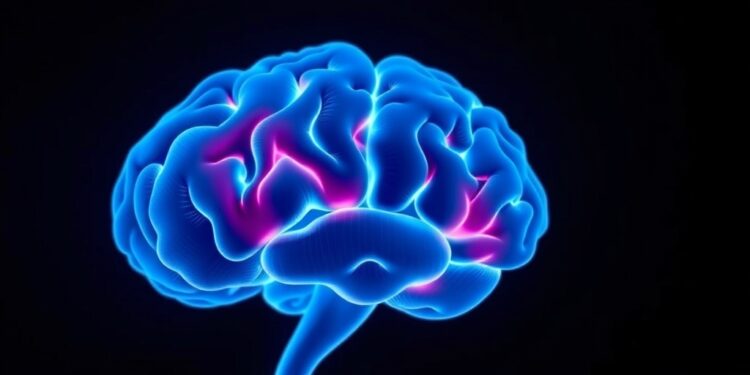
PHILADELPHIA— A series of transformative new guidelines have emerged, designed to assist healthcare professionals in accurately identifying a prevalent yet frequently misdiagnosed condition affecting the cognitive health of older adults. This condition, known as limbic-predominant age-related TDP-43 encephalopathy (LATE), often gets confused for Alzheimer’s disease (AD), leading to significant implications for patient care. This critical diagnostic framework has recently been made public in a collaboration led by researchers from Penn Medicine, highlighting their commitment to advancing our understanding of this troubling memory-loss syndrome.
The newly established diagnostic criteria for LATE have been published in Alzheimer’s and Dementia: The Journal of the Alzheimer’s Association. This announcement marks a pivotal moment in the neuroscience community, promising to enhance the trajectory of clinical trials and treatment options for a disorder that, despite its prevalence, has been largely overshadowed by more widely recognized conditions like Alzheimer’s. The significance of properly diagnosing LATE cannot be overstated, as it enables both healthcare providers and families to make informed decisions about appropriate treatments, paving the way for better patient outcomes.
As stated by Dr. David Wolk, co-director of the Penn Memory Center and a driving force behind the research, the availability of clear diagnostic guidelines not only empowers patients and their families with knowledge about their prognosis but also shapes the path healthcare professionals take in treatment selection. With emerging therapies targeting the amyloid proteins commonly associated with Alzheimer’s disease, accurate identification of LATE is crucial. This distinction will determine whether patients can benefit from these new therapies or require tailored interventions for LATE.
LATE primarily affects individuals aged 80 and above, causing cognitive decline manifested through memory loss. However, unlike Alzheimer’s disease, which is characterized by the accumulation of beta-amyloid and tau proteins in the brain, LATE involves the build-up of TDP-43 proteins. This fundamental difference in pathology has important implications for treatment and prognosis, signaling the need for a more nuanced understanding of dementia in older populations. Research indicates that approximately 40% of adults over the age of 80 show signs of TDP-43 buildup, underscoring the widespread nature of LATE within this demographic.
Despite its prevalence, many healthcare practitioners remain largely unaware of LATE and its distinct symptoms. Autopsy studies have shown that a significant portion of individuals diagnosed with Alzheimer’s also exhibit signs of LATE, which adds complexity to the diagnostic process. In particular, while AD impacts broader cognitive functions such as language, planning, and visuospatial skills, LATE predominantly affects memory. This distinction becomes critical in ensuring that patients receive diagnosis and care appropriate to their specific condition.
Currently, there is no specific test for detecting TDP-43 in a living patient. The diagnosis of LATE relies heavily on cognitive evaluations and imaging techniques, including MRI scans that can reveal atrophy in brain regions associated with memory. These guidelines also suggest the testing of cerebrospinal fluid to ascertain the presence of beta-amyloid and tau proteins, providing yet another layer of diagnostic insight. Nevertheless, the challenge remains that TDP-43 can only be conclusively identified through autopsy after death.
The publication of these guidelines for diagnosing LATE represents the first step toward broadening the conversation around this critical issue. By utilizing cognitive assessments and imaging methods, researchers aim to create a clearer picture of how LATE can be distinguished from other types of dementia, such as frontotemporal lobar degeneration (FTLD) and dementia with Lewy bodies. Each of these conditions presents unique clinical profiles, further emphasizing the necessity for precise diagnostic criteria.
Dr. Wolk points out that accurate diagnosis of LATE not only sets the groundwork for further explorations into TDP-43-focused clinical trials but can also shed light on how existing treatments impact individuals afflicted by both LATE and Alzheimer’s. As the medical community moves forward, these diagnostic frameworks will serve as essential tools, guiding research into both new and existing therapies that target these debilitating conditions.
The heightened interest in LATE also reflects a broader trend in neuroscience to rethink our existing paradigms surrounding dementia. As treatments evolve and new research emerges, the importance of differentiating between types of dementia will only grow. LATE may not have received the same level of attention as Alzheimer’s, but its impact on patient lives is profound, and understanding its characteristics can lead to improved management strategies.
The work of researchers at Penn Medicine underscores the critical intersection of research and clinical practice. The lack of an existing test for TDP-43 highlights the ongoing need for innovative methodologies and research initiatives. These diagnostic guidelines could catalyze significant advances, transforming not only how clinicians approach dementia care but also how patients perceive their conditions and potential for recovery.
This groundbreaking research, which is supported by various National Institutes of Health grants, stands as a testament to the ongoing commitment to unraveling the complexities of neurodegenerative diseases. The interconnection between LATE and Alzheimer’s disease creates challenges, but it also opens doors for collaborations aimed at understanding these conditions’ overlapping and distinct features.
In conclusion, the new diagnostic criteria for limbic-predominant age-related TDP-43 encephalopathy demonstrate a notable advancement in dementia research and patient care. As the healthcare community works to implement these guidelines, the hopes of better diagnosis and treatment for individuals suffering from this condition come into clearer focus. This progress is particularly essential in light of the growing elderly population, which will likely see a rising incidence of memory disorders like LATE and Alzheimer’s, necessitating an agile and informed response from medical professionals.
Subject of Research: Diagnostic guidelines for limbic-predominant age-related TDP-43 encephalopathy (LATE).
Article Title: Clinical criteria for limbic-predominant age-related TDP-43 encephalopathy.
News Publication Date: 14-Jan-2025.
Web References: https://pennmemorycenter.org/education-and-support-resources/understanding-my-diagnosis/limbic-predominant-age-related-tdp-43-encephalopathy-late/, https://alz-journals.onlinelibrary.wiley.com/doi/full/10.1002/alz.14202, https://www.alzheimers.gov/news/guidelines-proposed-newly-defined-alzheimers-brain-disorder, https://onlinelibrary.wiley.com/doi/10.1002/ana.26711, https://www.pennmedicine.org/news/publications-and-special-projects/penn-medicine-magazine/fall-winter-2023/the-scientific-life-of-virginia-m-y-lee, https://www.nia.nih.gov/health/alzheimers-and-dementia/what-limbic-predominant-age-related-tdp-43-encephalopathy-late#:~:text=For%20example%2C%20results%20from%20autopsy,approximately%2025%25%20of%20the%20donors., https://n.neurology.org/content/100/19/e2027.
References: National Institutes of Health (P30AG072979, R01 AG064233, P01 AG066597, R01AG034374, R01AG080667, K23AG062750, P30 AG066509).
Image Credits: Penn Medicine.
Keywords: Memory disorders, Alzheimer disease, Dementia.
Tags: Aging-related cognitive declineAlzheimer’s disease diagnosisAlzheimer’s & Dementia journal.Cerebrospinal fluid biomarkersClinical diagnostic criteriaDementia differential diagnosisLimbic-predominant age-related TDP-43 encephalopathy (LATE)Memory disorders misdiagnosisNeurodegenerative disease researchNeuroimaging in dementiaPenn Medicine researchTDP-43 protein pathology





